Parcel Shipping Guide 101: An In-Depth Overview
Parcel shipping is a vital component of modern commerce, enabling the efficient delivery of packages from businesses to consumers and between individuals across the globe. But it can be difficult to manage parcel shipping on your own, whether you are new to this shipping method or seasoned veteran.
This guide is your in-depth resource to understanding and leveraging this powerful shipping option. It covers everything you need to know about parcel shipping, from basic definitions to sophisticated shipping strategies for your business. Let’s get started!
Introduction to Parcel Shipping
Parcel shipping encompasses a wide range of services, including standard ground delivery, expedited shipping and international shipping options. The process involves picking up parcels from the sender, sorting them at distribution centers and then delivering them to the recipient's address. Parcel shipments can range from small packages weighing just a few ounces to larger boxes that can weigh up to 150 pounds or more, depending on the carrier's regulations.
With the rise of e-commerce in recent years, parcel shipping has become increasingly sophisticated, incorporating tracking technologies, delivery time guarantees and specialized handling for fragile or perishable items.
Types of parcel shipping
There are several methods of parcel shipping, each catering to different needs and preferences. Ground shipping is the most cost-effective option, ideal for non-urgent deliveries. Expedited and overnight shipping guarantee quicker transit times, usually within one or two business days, but at a higher cost. International shipping moves goods across borders and oceans, and involves customs procedures and restrictions on size and weight, depending on destination countries.
Each type of shipping serves distinct needs, allowing the shipper to choose the best option for their delivery requirements, timeline and budget.

Parcel shipping carriers
When it comes to U.S. parcel shipping, several carriers dominate the market. UPS® is one of the largest logistics companies in the world, and is renowned for its reliability, breadth of services and extensive technological capabilities, making it a popular choice for small and midsized businesses (SMBs). Other major U.S. parcel carriers include FedEx, the United States Postal Service (USPS) and DHL.
Parcel shipping vs. freight shipping
Many shippers assume there is little difference between parcel and freight shipping, which can be a costly mistake. There are several key differences to consider when deciding the appropriate type of shipping for your goods.
Some of the main distinctions between parcel and freight shipping include:

Shipping volume
Freight shipping caters to larger volume shipments and can encompass palletized goods, bulk materials, or oversized items. Generally, shippers who need to transport lower volumes of goods will gravitate toward parcel shipping.
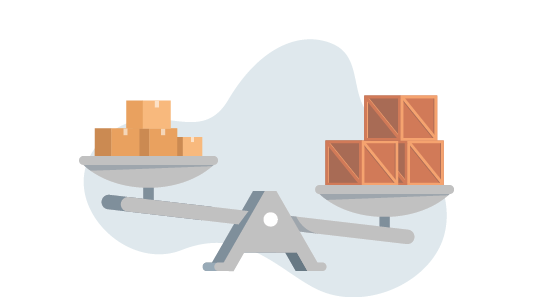
Weight & size limitations
Parcel services are generally more efficient for lighter shipments under 150 pounds, while freight shipping can accommodate heavier loads and larger dimensions. This makes freight shipping the preferred option for SMBs that regularly move heavier or bulky items, such as raw materials and industrial machinery.

Cost implications
Generally, parcel shipping rates are determined based on the weight, dimensions and speed of the shipment. This tends to make them more costly on a pound-per-pound basis than freight shipping, especially for larger shipments.
Parcel Shipping: A Step-by-Step Guide
At first blush, shipping a package seems like a simple process. Many shippers don’t think much beyond throwing an item in a box, taping it up and slapping a label on it. However, it takes a bit more care and know-how to ship packages in a way that maximizes the chance of a successful journey and minimizes the chance of damage or loss.
In this section, we’ll take you through the key steps for successfully shipping business parcels. By just taking a little extra time and effort, you’ll make yourself, your budget and your customers a lot happier!
Step 1: Setting your parcel shipping strategy
The very first thing to do is to take a holistic view at your entire shipping operation and ask yourself a few questions: What will your parcel volume be on a regular basis? How often will you need pickups at your office/warehouse? Will you need to partner with a third-party logistics (3PL) provider? Evaluating your overall shipping program will help guide you through the rest of the steps and keep your focus on what’s important for your business and your customers.
Step 2: Checking your checklist
Having a proper shipping checklist can streamline your process and help prevent common mistakes. Your checklist should include items such as verifying the recipient's address, choosing the appropriate packaging materials, measuring and weighing the parcel accurately, selecting the right shipping option based on urgency and cost and securing all necessary documentation.
Don't forget to include check boxes for insuring valuable items and scheduling pickups, if needed. By following a comprehensive checklist, you can ensure that each shipment is prepared consistently and professionally, reducing the likelihood of errors and improving overall efficiency in your shipping operations.
Step 3: Proper parcel packaging
Parcel packaging is not the place to take shortcuts. Trying to save a few pennies here could cost you more than a few dollars if your goods aren’t properly protected during transit. Crucial elements to consider include:
Using a box in good condition.
Always use new, strong boxes for your parcel shipping. When selecting a box for your shipment, you should also be mindful of weight and size limits which can affect your shipping rate (and how much packaging materials you’ll need).
Removing old labels.
If you do choose to reuse a box, be sure to remove or cover any old labels. This helps limit confusion about the destination in transit, and upon final delivery to the recipient.
Using cushioning.
Invest in packaging materials to help absorb impact and protect breakable products in transit. Make sure to wrap fragile products individually and fill empty spaces with cushioning material like bubble wrap or packing peanuts.
Sealing tightly with strong tape.
Use 2-inch-wide clear, brown, reinforced or paper-packing tape and seal your packages by taping down the middle opening and edges of the box (creating an “H” shape).
Avoiding string or paper overwrap.
These kinds of materials can easily get caught on the conveyor belts used to sort and ship your packages — damaging the conveyor and your package in the process.
Protecting your shipping label.
Especially in the winter when snow and sleet are common, it’s important to protect your shipping label with a label sleeve or clear tape to ensure it stays readable throughout transit — otherwise your shipment could be delayed.
Step 4: Accurate package labeling and documentation
Proper labeling and documentation are crucial for ensuring your package reaches its destination safely and on time. Always use clear, legible labels that include both the sender's and recipient's full addresses, including ZIP codes. If shipping internationally, include any necessary customs forms and declarations. Double-check that all information is accurate and up-to-date to avoid delays or returned packages. As mentioned above, consider using weatherproof labels or placing them in clear plastic sleeves to protect them from damage during transit.
Step 5: Parcel tracking and confirming delivery
Keeping tabs on your shipment and getting delivery confirmation are essential steps in the shipping process. UPS® and other carriers provide tracking numbers for parcels, allowing you to monitor your package's progress in real-time. Make it a habit to save these tracking numbers and check them regularly. An intuitive, modern transportation management system (TMS) like myUnishippers™ can take care of shipment tracking (and all the other aspects of your shipping process) for you.
If you're shipping valuable or time-sensitive items, consider using services that require a signature upon delivery. This adds an extra layer of security and confirmation that your package has safely reached its intended recipient. You can also sign up for email or text notifications for key shipping milestones, keeping you informed throughout the parcel’s journey.
Want to learn more about the parcel shipping process? Check out The Best Shipping Process for tips and resources!
Types of Parcel Shipping
There are two main types of parcel shipping: domestic and international. Domestic shipping typically involves the transportation of goods within the same country, while international shipping entails moving goods across borders.
This section will cover the key distinctions of domestic and parcel shipping, as well as best practices and potential pitfalls to avoid.
Domestic Parcel Shipping
Since domestic parcel shipping moves goods around the same country, it often results in faster delivery times and more straightforward logistics. Due to fewer regulations and less complex customs processes, domestic shipments also generally have lower costs.
Types of Domestic Shipping
Domestic shipping comes in a variety of options to meet different needs and timelines. The main types of domestic shipping services include ground (also known as standard), expedited, and overnight. Each of these services caters to different urgency levels and budgets, providing flexibility to small and midsized businesses (SMBs).
- Ground shipping provides the best possible value for shippers who are not as concerned about timeframes. UPS® Ground, for example, offers guaranteed delivery in 1–5 business days. Its slower speed comes at a lower cost.
- Expedited shipping is designed for more time-sensitive shipments that need to be delivered within 2–3 business days. UPS options in this range include UPS 3 Day Select®, UPS 2nd Day Air A.M.® and UPS 2nd Day Air®. This option is costlier than ground shipping, but not as expensive as overnight.
- Overnight shipping is the best choice for the most urgent shipments, as long as cost is not as much of a concern. UPS overnight options include UPS Next Day Air Saver®, UPS Next Day Air® and UPS Next Day Air® Early. The higher cost of this option reflects the urgency and speed of service required to meet extremely tight timelines.

International Parcel Shipping
Since international parcel shipping involves goods moving across borders, it has additional challenges that are not part of the domestic shipping process.
This complexity can lead to longer transit times and the need for paperwork to comply with local laws. Key areas of international shipping that require consideration and care include customs and import regulations, duties and taxes, restricted and prohibited items and insurance.
Customs and Import Regulations
Customs and import regulations play a crucial role in international shipping. Each country has its own set of rules and guidelines that must be followed when goods cross their borders. To ensure smooth clearance, shippers must provide accurate and complete documentation, which may include commercial invoices, certificates of origin and electronic export information (EEI) for U.S. exports valued over $2,500.
It's essential to research the specific requirements for your destination country, as prohibited items and documentation needs can vary widely. An online shipping tool like myUnishippers™ can help you identify and prepare the necessary paperwork and submit it electronically for earlier processing and faster customs clearance.
Duties and Taxes
Duties and taxes are fees imposed by governments on imported goods. These charges vary depending on the type of item, its value and the country of origin and destination. It's important for both shippers and recipients to be aware that these additional costs may be incurred upon arrival at the destination country. To avoid surprises, use online calculation tools provided by carriers like UPS® to estimate potential duties and taxes in advance.
Prohibited and Restricted Items
Many countries have specific lists of items that cannot be imported or require special permits. It's crucial to check the official customs website of the destination country before shipping to ensure that your items are allowed.
Use Harmonized System (HS) Codes to correctly classify your goods, as this standardized system helps customs authorities identify products and assess appropriate taxes. Incorrectly classified items can result in unexpected charges, delays, or rejection of the shipment.
Shipping Insurance
When shipping internationally, obtaining shipping insurance is a crucial step that safeguards against unforeseen losses. Don't make the mistake of assuming that carrier liability will give you the coverage you need, as it isn't insurance and may not be sufficient for valuable or fragile items.
One of the key benefits of shipping insurance is the financial protection it offers. In the event that a package is lost, stolen or damaged during transit, insurance can provide reimbursement for the value of the goods, safeguarding your investment and offering valuable peace of mind.
Learn More
Have a question about parcel shipping types?
As an industry-leading 3PL, Unishippers provides best-in-class shipping tools, technology and support to help you easily manage your parcel shipping. Reach out to one of our experts today for a free consultation.
Reducing Parcel Shipping Costs
If your business is like most, you have a budget for your shipping operations and you’re looking to maximize every dollar you spend. Inefficiencies, lack of knowledge, poor planning and inflexibility are the enemies of your bottom line. The solution? Ensuring that you’re informed, prepared and agile in all your shipping activities.
This section will help you accomplish exactly that, covering top tips and best practices for controlling and reducing your parcel shipping costs.
Tips for cost-effective parcel shipping
Shipping costs can quickly add up, especially for small and midsized businesses (SMBs) looking to optimize their operations. Fortunately, there are several strategies you can implement to keep these expenses in check, including:
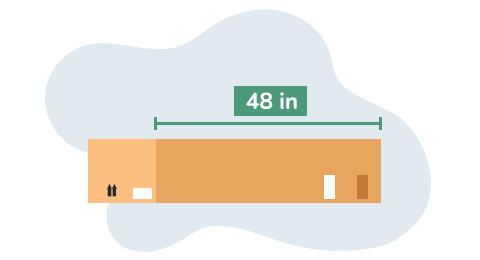
Understanding cost-influencing factors
Getting a grasp on the factors that influence shipping costs is the first step to managing your expenses. Carrier fees are typically based on a combination of the parcel's weight, dimensions and destination. Additionally, factors such as delivery speed, insurance and special handling requirements can also impact the overall cost.

Package efficiently
Consider using smaller boxes or padded envelopes that fit your items snugly to avoid excessive dimensional weight charges. Use lightweight packing materials like bubble wrap or packing peanuts to secure items without adding significant weight. Also, using standardized box sizes can often yield better rates, so it's worth investing in a variety of box sizes that meet your typical shipping needs.

Compare carrier rates
Not all shipping options are created equal, and rates can vary significantly depending on the service and destination you choose. It’s always worth doing a comparison to find the best deal. Utilize online tools like myUnishippers™ to compare costs and obtain much more control over your shipping. Additionally, consider partnering with a third-party logistics (3PL) like Unishippers to obtain competitive rates by leveraging their aggregated customer buying power.

Leverage off-peak shipping
Shipping during off-peak times can lead to substantial savings. Carriers may offer lower rates for shipments sent during less busy periods. If your business can be flexible with shipping schedules, you’ll avoid peak seasons and times of day when shipping volumes are highest. Planning ahead and shipping during these off-peak times can help you take advantage of reduced rates.
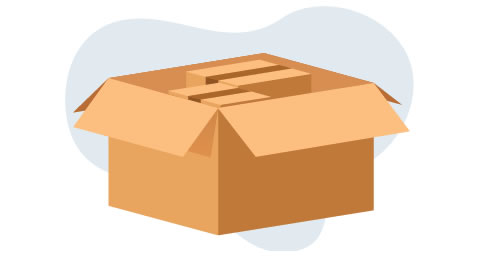
Consider parcel consolidation
If you frequently send multiple parcels to the same location, combining them into a single larger shipment can be more economical than sending them individually. This not only reduces the number of shipments but can also qualify you for bulk shipping discounts. Additionally, using regional fulfillment centers can help aggregate orders and reduce the distance parcels need to travel, further lowering your shipping costs.
Implementing these recommendations will not only save you money but also streamline your shipping process, making your business operations more efficient — and less stressful!
Understanding shipping rates for small packages
In today's fast-paced business environment, optimizing logistics operations is crucial for maintaining efficiency and competitiveness. Less-than-truckload (LTL) shipping, a cost-effective method of transporting goods, presents its own set of challenges that require strategic optimization. By implementing the strategies below, shippers can streamline their operations, reduce costs and elevate customer satisfaction.
Parcel Rate Calculation Methods
As mentioned, most parcel carriers use a combination of distance, delivery speed, weight and dimensions to calculate shipping costs. The two most common methods are the dimensional weight (DIM) method and the actual weight method. DIM weight considers the package's size in relation to its weight, which is particularly important for lightweight but large packages. Carriers will apply whichever method is greater to calculate the shipment rate.
Understanding these methods can help you predict shipping costs more accurately and choose the most cost-effective packaging options.
Parcel Weight and Size Factors
Heavier and larger packages generally cost more to ship because they take up more space and require more fuel. Carriers often charge by the pound, with higher rates for packages that exceed certain weight thresholds. In addition to weight, the package's dimensions (length, width and height) can affect the cost
Common Shipping Fees
Apart from the base shipping rates, several additional fees can affect the total shipping cost. It's essential to be aware of these potential extra costs, as they can add up quickly and impact your bottom line.
Common fees include:
- Residential surcharge. Deliveries to many businesses, such as those operating out of a home or located in a private residence, will incur this fee.
- Pickup fee. This is assessed when you have a driver come by to pick up your shipments instead of you taking them to a drop-off location or drop box.
- Address correction fee. Some types of freight, such as hazardous materials, cost more to ship than others.
- The shipping method. If an address is entered incorrectly and requires an update, this increased shipping cost to the carrier is passed along to the shipper.
- Additional handling fee. This surcharge is applied to irregular or heavy packages that require special handling.
- Large or oversized package surcharge. This fee is assessed when a package exceeds the carrier’s weight and size restrictions.
There are also usually charges for signature confirmation and insurance, so factor these into your calculations to avoid unpleasant surprises.
How parcel rates can impact your pricing strategy
Understanding shipping rates and related costs is vital for developing an effective pricing strategy. High shipping costs can deter customers from completing their purchases, leading to cart abandonment. By accurately calculating and optimizing shipping rates, SMBs can offer competitive shipping options without compromising profitability.
Consider offering free shipping for orders above a certain value or baking shipping costs into your product prices to create a more appealing shopping experience. Transparent and predictable shipping costs can enhance customer satisfaction and build trust, ultimately driving loyalty and repeat business — a win for both you and your customers!
Want more tips? Check out our Guide to Getting the Best Parcel Shipping Rates for more strategies on reducing shipping costs.
Parcel Shipping Quotes
Some of the key early steps in the parcel shipping process are obtaining, comparing and analyzing quotes. While it may seem like shippers should simply choose the lowest quoted rate, that may not always be the wisest decision.
In this section, we’ll examine the factors that go into a parcel shipping quote, and how to evaluate quotes to obtain the best combination of value and service for your shipments.
Factors affecting parcel shipping quotes
When it comes to small package shipping, several factors can influence the cost of getting your parcel from point A to point B. Understanding these elements can help you anticipate costs and make informed decisions. Let’s break down the key factors that affect your shipping quotes.

Parcel Weight and Dimensional Weight
The weight of a parcel is one of the primary determinants of its shipping cost. Carriers often have tiered pricing structures based on weight categories. Whether you’re shipping a lightweight document or a bulky piece of machinery, accurately measuring and declaring the weight of your parcel is crucial for obtaining an accurate shipping quote.
Along with weight, the volume (or dimensional weight) of a package also plays a significant role, particularly for large but lightweight items. Carriers use a formula to calculate dimensional (or DIM) weight, which is essentially the package’s density. For example, a large box filled with lightweight materials may cost more than a smaller, heavier box. To minimize costs, it's wise to use appropriately sized packaging for your items.

Distance and Speed
The distance between the origin and destination points is another critical factor in shipping costs. Longer distances typically incur higher shipping fees, as they involve more fuel, time and logistical resources. Carriers often segment distances into zones, with further out zones resulting in higher charges. International shipping can further complicate this factor due to customs fees, taxes and additional handling requirements. Besides distance, the speed of the service needed will impact the cost. More urgent shipments require faster shipping, which in turn increases the price. Make sure you’re not selecting a shipping speed that’s faster (and more expensive) than what will satisfy your customer’s expectations.

Additional Parcel Services
Adding services to your shipment beyond basic handling and transportation will necessitate a higher quote. Many shippers choose to protect their more valuable shipments with insurance, for example. Delivering to a residence, requiring signature confirmation and requesting temperature protection services will all also add costs to a shipment’s quote.

Type of Goods
The nature of the items being shipped can also impact the quote. Fragile, hazardous or perishable goods often require special handling and packaging, and often quicker delivery options to ensure they arrive safely. These requirements add extra costs to the shipping process. For instance, shipping electronics may need protective packaging and insurance, while perishable goods may require refrigerated transport.

Seasonal Demand
Seasonal fluctuations can influence shipping prices as well. During peak times, such as the holiday season, carriers often experience increased demand, leading to higher rates. Additionally, weather conditions during certain seasons can affect the speed and reliability of delivery services, which can also impact costs. It's wise to plan ahead and account for potential seasonal price surges when budgeting for your shipping.

Leveraging a 3PL
Finally, your quote can be greatly impacted (for the better!) by taking advantage of a reputable third-party logistics provider (3PL) like Unishippers, that can obtain negotiated rates from carriers based on the aggregated buying power of their customers. In addition, the best 3PLs can offer benefits such as discounts for bulk shipping, loyalty programs and integration with e-commerce platforms. Consider these benefits as part of your overall analysis to determine if they could lead to long-term savings or improved operational efficiency.
How to compare and analyze parcel shipping quotes
Ensuring you get the best value and service for your shipments requires detailed comparison and analysis of your quotes. To make an informed decision, it’s crucial to consider several factors beyond just the quoted cost.
Here are several factors you should consider when comparing parcel shipping quotes to ensure you satisfy your budget and your customers’ expectations.
Beyond cost, you should always evaluate the carrier, their reputation and the quality of service they are known to provide. Consider a carrier like UPS® that offers:
- Delivery reliability. How consistently does the carrier meet their delivery promises? Delayed shipments can affect customer satisfaction and operational efficiency. Customer reviews and ratings are invaluable in understanding the quality of service provided by carriers. Look for reviews that mention reliability, handling of parcels and customer service responsiveness. High satisfaction ratings often justify slightly higher costs.
- Handling and care. Are parcels handled with care to avoid damage during transit? This is especially critical for fragile or high-value items.
- Customer support. Efficient problem resolution and customer support can be crucial when dealing with shipping issues. Carriers with robust support systems can save you time and stress.
- A large footprint. A robust offering of stores, centers, outlets and drop boxes ensures that there’s a convenient place near to your business to accommodate your shipping needs.
- A unified delivery network. Another huge convenience factor, carriers with unified networks enable one driver to handle all your pickups and also allow both air and ground shipments to be left in their drop boxes.
By employing a thorough comparison and analysis approach, you can ensure that your parcel shipping decisions balance cost-effectiveness with high-quality service. Ultimately, this leads to happier customers and a happier you!
Parcel Insurance: Protecting Your Cargo
If your small or midsized business (SMB) ships reasonably valuable goods, ensuring those shipments arrive safely is critical to customer loyalty and your bottom line. Playing the odds and hoping things work out for the best is a bet you don’t want to make!
This section outlines the different types of parcel insurance and the risks they cover, helping you make the best possible choices to protect your valuable shipments and your equally valuable reputation.
What is parcel shipping insurance and why is it important?
Parcel insurance provides peace of mind by covering potential losses or damages during transit. It is not the same thing as limits of liability, and has a much broader and comprehensive impact on parcel protection.
Parcel Liability Coverage
Liability coverage (also known as declared value) is typically offered by carriers and covers their responsibility for loss or damage to packages while in their possession. This coverage is limited to the carrier’s liability, which is often calculated based on weight or declared value. While convenient, liability coverage may not fully reimburse you for the value of high-ticket items. For example, the declared value for a given shipment with UPS and FedEx is just $100.
Liability coverage often includes:
- Loss or damage due to carrier negligence
- Limited to the carrier’s liability terms
Shipping Insurance Benefits
Selecting the right parcel insurance offers multiple benefits for both the shipper and receiver, and is almost always worth the small additional cost.
Key parcel insurance benefits include:

Full value
repayment
When you invest in insurance, your goods are covered up to their full retail value, instead of just the carrier’s limits of liability.

Disaster and theft protection
Unlike carrier liability, insurance covers every type of weather- and disaster-related losses (other than service guarantee failures) as well as spoilage of perishables due to delay and goods stolen from porches.

Comprehensive, specialty coverage
Gift cards, event tickets, jewelry and other high-value goods are not traditionally covered by carrier liability. That’s not the case with insurance.

A faster claims process
Carrier liability claims have no official deadline and can often take months.
Investing in the right parcel insurance is essential for protecting your business and ensuring customer satisfaction. For a reasonable extra cost, you and your customers can obtain priceless peace of mind knowing that your shipments are protected on every step of their journey.
Insurance claim process and documentation
As careful as carriers are with handling and delivering your shipments, the fact is that the occasional claim is inevitable if your shipping volume is high enough. Filing an insurance claim for a small package might seem daunting, but it doesn't have to be.
Take note of the following guidelines to keep your stress levels low and your chances of a successful claim high.
Claim Filing Process Basics
The first step is to report it immediately if you realize that a package has been lost, damaged or stolen. Most providers have a specific time frame within which you must report the issue, typically ranging from 30 to 90 days from the date of shipment. Early notification ensures that your claim can be processed promptly and increases the likelihood of a successful resolution.
Once you've reported the issue, the insurance company will usually provide you with a claim form. This form requires detailed information about the package, including the shipment date, tracking number, contents and value. Make sure to fill out the form accurately to avoid any delays in the processing of your claim.
Required Parcel Shipping Documents
The documentation required for a small package insurance claim generally includes the following:
- Proof of Value. This can be a purchase receipt or an invoice showing the cost of the items included in the package.
- Proof of Shipment. A shipping receipt or tracking information that verifies the date and method of shipment.
- Photos. If the package was damaged, photos of the damaged item and packaging materials are crucial for substantiating your claim.
- Claim Form. The completed form provided by the insurance company, detailing the nature of the claim and the value of the package.
Having all these documents ready and accurately completed will streamline the process and help your claim be approved more quickly.
Tips for a Smoother Parcel Claims Process
To ensure a smooth and hassle-free claim process, here are a few more recommendations:
- Document everything. Keep detailed records of your purchase, including receipts, shipping labels and photos of the items before shipment.
- Read the fine print. Familiarize yourself with your insurance policy, including what is covered, the maximum coverage limit and any exclusions.
- File fast. Don't wait to file your claim. The sooner you report the issue and submit your documentation, the faster your claim can be processed.
- Stay organized. Keep all your paperwork in one place and make copies of everything you submit to the insurance company.
- Don’t fear the follow up. If you haven't heard back within the expected timeframe, don't hesitate to follow up with the insurance company. Persistent, polite communication can sometimes expedite the process.
SMB owners already have enough on their plate without adding the stress of a disorganized claims process to the mix. By following these steps and staying informed and organized, you can navigate the small package insurance claims process with confidence and ease.
Learn More
Have a question about parcel shipping insurance?
As an industry-leading 3PL, Unishippers provides best-in-class shipping tools, technology and support to help you easily manage your parcel shipping. Reach out to one of our experts today for a free consultation.
Working With Parcel Carrier Partners
Shipping can make or break your business, full stop. In an age where customer expectations are sky-high, choosing the right carrier for your parcel shipments is more critical than ever. This section will cover the main factors to consider when selecting a shipping partner for your business.
How to choose the right carrier for your parcel needs
Every small or midsized business (SMB) has unique shipping needs and challenges. Choosing the right carrier partner will lower your stress levels, raise your customers’ satisfaction and ensure you have more time to focus on running your business.
As you evaluate potential small package carriers, keep the following attributes at the top of your list:
Parcel Service Offerings
SMBs should look for carriers that provide a range of shipping options to suit their unique needs. Whether you need overnight delivery, same-day shipping or international services, a carrier with a diverse suite of offerings ensures you're equipped to meet all your customers' demands. For example, if you often ship fragile items, select a carrier with specialized packaging and handling services. Additionally, consider carriers that offer value-added services like tracking, insurance, easy returns, photo delivery and more. These features can significantly enhance your customer experience, making your business more reliable and trustworthy in the eyes of your customers.
Reliability
Reliability is non-negotiable when it comes to your shipping. Your customers expect their orders to arrive on time and in perfect condition. A carrier with a reputation for reliability can help reduce worry and keep your customers happy. Look for carriers with high on-time delivery rates and positive customer reviews. It's also wise to consider carriers known for excellent customer service. Quick resolutions to any shipping issues can make a huge difference in maintaining customer satisfaction and loyalty.
Cost-effectiveness
Budgets are tight for many SMBs, so cost-effectiveness is another critical factor in choosing a shipping carrier. However, the cheapest option isn't always the best. You'll need to balance cost with the other factors discussed here. Compare the rates of various carriers for different service offerings. Additionally, consider the total cost of shipping, including any added fees for fuel surcharges, residential deliveries or peak season surcharges. Finding a cost-effective solution that doesn't compromise on reliability or service quality can help you save money while still keeping your customers smiling.
How UPS® can benefit your parcel shipping
SMBs who take the time to evaluate their carrier choices in the parcel shipping industry will discover the myriad of benefits UPS parcel services can give their business. UPS is the top parcel carrier in on-time package delivery, operates in more than 220 countries and territories and delivers more than billions of packages each year.
Here are some of the top benefits UPS can offer SMBs like yours:
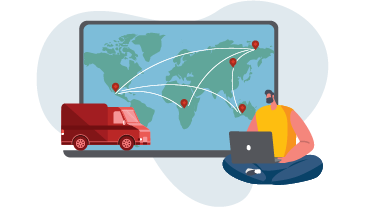
Range and reach of parcel services
UPS offers a diverse range of shipping options suited a variety of shipping needs and situations. Additionally, UPS's unified, global network ensures that your products can reach customers nearly anywhere in the world with nearly 180,000 network access points. UPS also accepts both air and ground shipments in their UPS Drop Boxes and has one driver to handle all of your pickups. That’s the power and convenience of a unified network!

Unbeatable reliability
When it comes to reliability, UPS is the trusted name in the industry. Their record of timely deliveries and minimal shipment disruptions is the envy of other carriers. Not only is UPS number one in on-time package delivery, 90% of their ground parcels are delivered in fewer than three days. Knowing that your packages will arrive on time, every time, can significantly reduce the stress associated with logistics.

Sophisticated parcel tracking solutions
UPS's advanced tracking solutions provide real-time visibility into the status of your shipments on every step of their journey, allowing you and your customers to stay fully informed at all times. With UPS's robust tracking system, you can monitor your packages from the moment they leave your hands until they reach the customer's.

UPS and Unishippers are the complete package
The best way to take advantage of all the benefits UPS has to offer your business is to partner with Unishippers. As part of the largest non-retail UPS authorized reseller in the country, we’ve spent more than 15 years leveraging the combined buying power of tens of thousands of SMBs like yours to obtain affordable UPS rates. With Unishippers, the best solutions from UPS are also backed by the personalized support that only our dedicated team can provide.
Technology in Parcel Shipping
Parcel shipping technology has come a long way since the days of the first brown UPS® package cars and drivers using paper maps to navigate shipment routes. Today’s shipping tech permeates every aspect of the logistics process, from inventory management and shipment planning to tracking and delivery. Here, we'll explore several technologies that are revolutionizing modern parcel shipping and how they can benefit you and your customers.
Critical aspects of modern shipping technology include:
Transportation management systems
Transportation management systems (TMS) are the backbone of today’s shipping operations. These platforms help SMBs plan, execute, track and optimize the movement of their goods. An intuitive TMS like myUnishippers™ offers a myriad of features such as preloaded shipment details, service selections, tracking visibility and robust reporting options. By automating these processes, SMBs can reduce costs, improve delivery times and enhance overall operational efficiency.
For e-commerce-focused SMBs, a TMS can integrate directly with online sales platforms, streamlining order fulfillment and ensuring that customers receive their parcels promptly. SMBs can also leverage TMS to manage multiple carriers and gain insights into shipping performance, thus enabling them to make better, data-driven decisions and improve service levels.

Logistics Automation
Automation is another game-changer in the logistics industry. From automated sorting systems in warehouses to robotic picking and packing, technology is streamlining every aspect of parcel shipping. Automated systems can handle high volumes of parcels with precision and speed, reducing the reliance on manual labor and minimizing errors.
For SMBs, investing in automation can lead to significant cost savings and increased throughput. E-commerce businesses can benefit from faster order processing times and reduced fulfillment costs, enabling them to scale operations without compromising on quality. Logistics managers can optimize warehouse layouts and workflows, ensuring that resources are utilized efficiently.
Data Analytics
Data analytics is at the heart of modern parcel shipping. By using a powerful TMS to collect and analyze data from various touchpoints in the supply chain, SMBs can gain valuable insights into their operations. Analytics can reveal patterns and trends, such as peak shipping times or common delivery issues, allowing businesses to make informed decisions.
SMBs can also use data analytics to optimize routes, manage inventory levels and forecast demand. This can help them analyze customer behavior and preferences, tailoring their shipping strategies to meet customer expectations.
Benefits of using a TMS in parcel operations
If your SMB isn't accustomed to taking advantage of modern shipping technology like a TMS, the prospect can seem daunting. However, by taking the time and effort to understand and integrate a robust TMS into your shipping, you'll reap rewards across several fronts.
Key benefits you'll see from effective technological integration are:
Enhanced Efficiency
Integrating technology into your parcel shipping operations can dramatically streamline processes and save valuable time. Automated shipping software like a TMS, for instance, can manage multiple shipping carriers, print labels and handle bulk shipments with just a few clicks. This reduces the need for manual entry and minimizes the risk of human error, ensuring that packages are processed quickly and accurately. Additionally, TMS systems can save frequent shipping details and preferences and also help you easily add insurance, saving you time on every shipment setup.
Reduced Costs
Cost reduction is a critical consideration for any SMB, and integrating shipping technology offers numerous opportunities to cut expenses. A TMS can compare rates across different service offerings to ensure that you always get the best rates. A well-designed TMS will also offer multiple lines of business as shipping options, such as parcel and freight. This lets you reduce costs by using one consolidated, convenient platform for all of your business shipping.
Improved Tracking Capabilities
One of the standout benefits of integrating technology into shipping operations is enhancing your tracking capabilities. Advanced tracking systems provide real-time visibility into the status of each shipment, from the moment it leaves the warehouse until it reaches the customer's doorstep. This level of transparency not only helps you monitor and manage your shipments more effectively but also provides customers with up-to-the-minute information about their deliveries. Enhanced tracking capabilities can reduce the number of lost or delayed packages and enable you to respond quickly to any issues that arise.
Next-level Customer Service
Ultimately, the integration of technology into shipping operations can lead to a significant improvement in customer service. With an intuitive, time-saving TMS system, your team is freed up to focus on customer inquiries and support. Your customers benefit from faster and more reliable shipping, as well as the ability to track their orders in real-time.
Additionally, technology can facilitate better communication between you and your customers, sending them automatic updates and notifications about the status of shipments. This level of service can greatly enhance customer satisfaction and loyalty, turning first-time buyers into long-time buyers!
Want to learn more about shipping technology? Check out What to Look for in Parcel Shipping Software for tips and resources!
Parcel Shipping in Small Businesses
Tens of thousands of SMBs outsource their parcel shipping operations to a 3PL like Unishippers. Businesses often face unique shipping challenges, tight budgets and demanding customer expectations, and a 3PL can be a godsend in these areas and more.
The right 3PL will offer you and your customers:

Customized parcel shipping solutions
Unlike a one-size-fits-all approach, 3PLs offer tailored services. This can include anything from specialized packaging expertise to assessing your shipping operations efficiency. By customizing their approach, 3PLs ensure that your shipping process aligns with your goals.
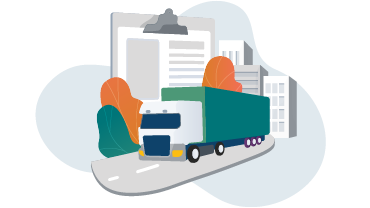
RIght-sized small parcel recommendations
A 3PL understands the logistical needs of a SMB compared to a large enterprise. This targeted approach ensures that businesses, regardless of their size, receive the personalized support they need.

Cost
control
Keeping expenses contained is a critical concern for SMBs. Using a 3PL can result in significant cost savings through negotiated rates with top carriers.

Focused flexibility for SMBs
It’s important to choose a 3PL that specializes in SMB shipping. By outsourcing their parcel shipping operations to a trusted, SMB-focused 3PL, businesses can focus on what they do best — growing their business.
E-commerce Shipping Services
In just a few short years, e-commerce has exploded. More small and midsized businesses (SMBs) than ever are taking advantage of the enormous audience and swelling demand for online shopping.
Part and parcel (pun intended!) with the rise of e-commerce is the accompanying expansion of shipping services to support it. This section will dive into the benefits of e-commerce shipping and integrations and how your business can take full advantage of them.
Benefits of e-commerce shipping for your online business
If your SMB isn't integrating shipping services into your online marketplace, you're missing the boat (or plane, or truck).
Here are some of the key benefits that e-commerce shipping has to offer:
Seamless Software Integration
One of the standout advantages of e-commerce parcel shipping is its ability to seamlessly integrate with many commonly used software platforms. Whether you're using an inventory management system, a customer relationship management (CRM), or an e-commerce platform like Shopify or WooCommerce, modern shipping solutions like myUnishippers™ can synchronize with these tools easily. This integration ensures that your customers' order processing is smooth and error-free, allowing you to focus on running your business instead of troubleshooting technology.
Efficiency-boosting Automation
Automation is at the heart of effective e-commerce shipping. By automating repetitive tasks such as label printing, tracking and notifications, you can save a significant amount of time and reduce human error. The efficiency boosting effect of automation also extends to inventory updates and shipping confirmations, ensuring that your customers are always in-the-know about their order status in real-time. Informed customers are content customers!
Speedy Scalability
Scalability is crucial for SMBs looking to grow. E-commerce parcel shipping solutions are designed to scale alongside your business. Whether you're shipping a few or a few hundred packages per day, these systems can handle varying volumes without compromising on speed or accuracy. This scalability ensures that as your business expands, your shipping operations can keep up with your growth and your ambitions.
Improved parcel cost-effectiveness
SMBs often operate on tight budgets, and finding ways to cut costs without sacrificing quality is essential. By utilizing shipping solutions that offer discounts, bulk shipping rates and flexible delivery options, businesses can significantly reduce their shipping expenses. Additionally, the integration of real-time shipping rate calculators allows businesses to choose the most economical shipping options for each order. When it comes to shipping rates, Unishippers offers discounted e-commerce rates through UPS®.*

Real-time Parcel Shipping Updates
In today's fast-paced world, customers expect to be informed about the status of their orders at all times. E-commerce parcel shipping solutions offer real-time updates that keep both you and your customers in the loop. From the moment an order is placed all the way until it reaches the customer's door, real-time tracking provides transparency and peace of mind. This feature not only enhances the customer experience but also reduces the burden on your customer service teams.
Enhanced Inventory Management
Effective inventory management is critical for the success of any online business. E-commerce parcel shipping solutions often come with integrated inventory management features that help businesses keep track of stock levels, manage reorders, and prevent stockouts or overstock situations. This integration ensures that businesses can maintain optimal inventory levels, which in turn leads to better cash flow and improved customer satisfaction.
How to streamline the parcel shipping process through e-commerce integrations
The last thing that you or your customers have time for is a choppy, unreliable online shopping and shipping experience. This causes headaches and wallet-aches for you and drives your frustrated customers to your competitors.
The key to a smooth and seamless e-commerce experience is comprehensive platform integration. "Integration" may sound like a tech-y and daunting word, but the process can be simple and painless. Here are the steps to making e-commerce integrations a reality for your SMB:
Ensure Platform Compatibility
The first step in integrating your e-commerce platform with a shipping service is ensuring compatibility. Most modern e-commerce platforms, like Shopify, WooCommerce, and Magento, support integration with major shipping carriers like UPS through APIs (application programming interfaces). Unishippers, for instance, offers integration solutions that work across multiple platforms, allowing you to connect our transportation management system (TMS), myUnishippers, with your existing enterprise resource planning (ERP), inventory management software, or other TMS systems. This compatibility ensures that all systems "speak the same language," enabling smooth data exchange and operational harmony.
Start Your Setup
Setting up the integration might seem intimidating, but with the right tools and resources, it can be straightforward. Begin by identifying the specific e-commerce and shipping platforms you're using and then follow the guidelines provided by the shipping service's API documentation. Unishippers provides developer resources to assist with implementing their RESTful API, making the setup process much more manageable.
Additionally, our e-commerce platform offers plug-ins that connect your shopping cart to myUnishippers, enabling your customers to access real-time shipping rates at a glance, as well as generating shipping labels and automating other steps. This shopping cart plug-in is an incredible convenience for you and your customers and creates a seamless shopping and shipping experience.
Customize Parcel Shipping
One of the key benefits of integrating e-commerce with shipping services is the ability to customize the process to fit your business needs. Customization options can include configuring shipping rate displays, tailoring shipping options based on customer location and setting up automated notifications for shipping updates. This level of customization ensures that the integration aligns perfectly with your operational workflows and enhances the overall customer experience.
Test, test, test
Before fully launching your integrated system, thorough testing is crucial. Begin by conducting test transactions to ensure that shipping rates are displayed correctly, shipping labels are generated without errors and order data flows seamlessly between systems. Testing helps you identify and fix any issues early, ensuring that the integration operates smoothly once it goes live. Unishippers' integration team can also assist in this phase, providing expertise to ensure everything works as expected and is set up to meet your customers' expectations.
Training and Support
Finally, successful integration relies on well-trained staff and ongoing support. Once your system is set up and tested, invest time in training your team to use the new tools effectively. This includes understanding how to handle shipping queries, manage returns and troubleshoot potential issues. Many shipping service providers, including Unishippers, offer comprehensive support and training resources to help your business adapt to the new system. Continuous support is also vital to address any future challenges and to keep your system running efficiently for years to come.
Learn More
Have a question about e-commerce shipping?
As an industry-leading 3PL, Unishippers provides best-in-class shipping tools, technology and support to help you easily manage your parcel shipping. Reach out to one of our experts today for a free consultation.
3PL Services and Outsourcing Shipping
There’s power in partnership. Just like a soldier would never go into combat alone, you should never go to battle in the business world without a trusted third-party logistics provider (3PL) at your side.
The benefits of outsourcing parcel shipping to 3PLs
The right 3PL partner can be a godsend for your small or midsized business (SMB). They're a force-multiplier, time and money-saver and trusted shipping advisor all rolled into one. The ideal 3PL partner for your business is one that specializes in SMB shipping. They'll have the experience and expertise to understand the unique shipping needs and challenges your business faces.
This section will go over the main reasons you should definitely consider partnering with an SMB-focused 3PL like Unishippers for all your business shipping.
Efficient Resource Allocation
When SMBs outsource their shipping needs to the right 3PL, they can reallocate their internal resources much more efficiently. Instead of dedicating time and people power to managing logistics, you can focus on your core competencies and the other issues that inevitably pop up in day-to-day operations. This shift not only enhances productivity, but also improves the overall operational efficiency of your business. Time saved is money saved.
Personalized access to logistics experts
SMB-focused 3PLs bring a wealth of expertise and experience to the table. They are well-versed in the complexities of supply chain management, from specialty shipping needs to global shipping complexities. They’ll also get to know your business at a very detailed level and serve as an indispensable consultant. By leveraging this hard-earned expertise, you can avoid common pitfalls and ensure a much smoother shipping process all around. This access to professional knowledge can be particularly beneficial for small businesses that may lack the in-house logistics experience required for efficient order fulfillment.

Evolves with your business
One of the biggest advantages of partnering with a 3PL is scalability. As your business grows, so do your logistical needs. The right 3PL can easily scale its services to meet fluctuating demand, ensuring that your shipping operations can handle peak seasons, unexpected surges and slower times without a hitch. This flexibility is crucial for SMBs looking to expand their market reach without being bogged down by logistical constraints.
The right 3PL will also offer multiple types of shipping to your SMB, enabling you to choose between parcel and freight options as your business grows.
Cost-efficiency
Outsourcing logistics to a 3PL can also lead to significant cost savings. 3PLs like Unishippers have well-established networks and relationships with the best carriers, allowing them to negotiate better shipping rates than their customers could ever obtain on their own. For SMBs operating on tight budgets, these savings can be redirected towards growth initiatives and other important areas of the business. 3PLs will help you stretch your shipping dollars like never before!
Parcel Shipping Resources and Support
Knowledge isn’t just powerful, it’s transformative! We know parcel shipping is a vast topic with a huge effect on your bottom line. That’s why we created a comprehensive repository of resources covering every possible aspect of parcel shipping. Easily searchable and user-friendly, it can serve as your go-to guide for all things parcel related. Here are some hand-selected resources to get you started!
Your Complete Guide To UPS® Fees and Surcharges
Check out our extensive list of UPS fees and surcharges and learn how you can manage them effectively!
Small Package Shipping Rates: How Size and Weight Affect Price
The weight and dimensions of your small package express, ground and international shipments can have major impacts on your final…
Find the Best UPS® Shipping Rates for Your Business
Are you getting the lowest UPS shipping rates available for your business shipping? Learn how you can save on small package shipping with these helpful tips.
Parcel Shipping FAQs
We know you have lots of questions about parcel shipping. We’ve got the answers! In this section, we’ll cover some of the most commonly asked questions we receive about parcel shipping operations.
Unishippers: The Answer to All Your Parcel Shipping Questions
As there’s no way we could cover every possible parcel shipping-related question and topic in this guide, we encourage you to contact the Unishippers team for the answers to anything not covered here and a complimentary, customized shipping assessment.
After serving as the trusted shipping advisor for tens of thousands of small and midsized businesses (SMBs) for over three decades, we’ve seen it all and shipped it all, and we’re ready to be your dedicated shipping partner!
*Discounts off UPS daily rates. Rates are limited to shipping from the U.S. only. Rates and any applicable discounts are subject to change at any time without notice.
Table of contents
- Introduction to Parcel Shipping
- Parcel Shipping: A Step-by-Step Guide
- Types of Parcel Shipping
- Reducing Parcel Shipping Costs
- Parcel Shipping Quotes
- Parcel Insurance: Protecting Your Cargo
- Working With Carrier Partners
- Technology in Parcel Shipping
- Parcel Shipping in Small Businesses
- E-commerce Shipping Services
- 3PL Services and Outsourcing Shipping
- Parcel Shipping Resources and Support
- FAQs About Parcel Shipping
- Request a Free Consultation




